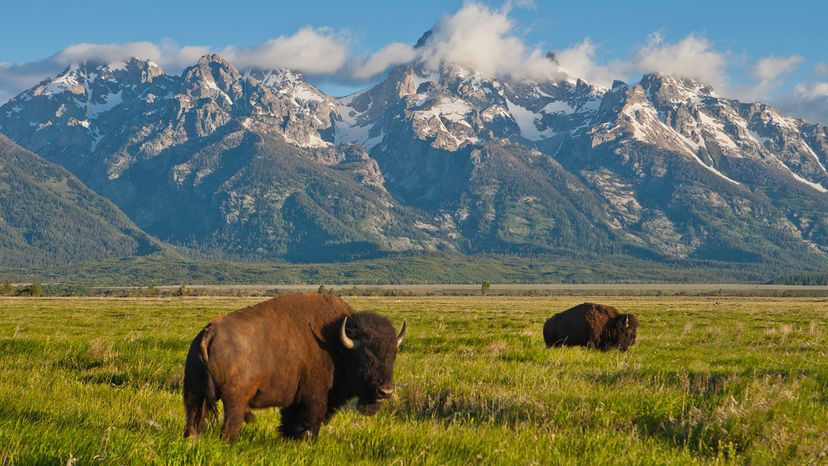Bison are members of the Bovidae family (hoofed animals including domestic cattle). There are two species in the Bison genus: American bison (Bison bison) and European bison (Bison bonasus).
American Bison
American bison (Bison bison) are native to North America and the national animal of the United States. They are sometimes divided into two subspecies: the plains bison (Bison bison bison) and the wood bison (Bison bison athabascae).
When Europeans first arrived in North America, it was inhabited by about 50 million plains bison — "the largest aggregation of large animals known to recorded history," according to Britannica. Native Americans living in the Great Plains successfully managed the bison population while utilizing bison meat, hides, and sinew, but white settlers brought the bison near extinction as they colonized the West.
"They're very smart animals," Lydia Austin, the interpretative programs manager at Custer State Park in South Dakota, told HowStuffWorks. "That's a problem that you run into with a lot of visitors at the park. They think they're, slow, docile, for lack of a better word 'dumb' animals."
That couldn't be further from the truth. In Yellowstone National Park, bison tend to injure more visitors than any other animal. (The park is also home to bears and wolves.) The National Park Service recommends keeping at least 25 yards (23 meters) of distance between yourself and a bison.
"They can turn on a dime," Austin says. "They use their front legs to turn and then swing their behind around, so they can turn a lot faster than your horses turn, or your truck. They usually go where they want to go."
European Bison
The European bison (Bison bonasus) is found in Eastern Europe, including Belarus, Bulgaria, Germany, Latvia, Lithuania, Poland, Romania, Russia, Slovakia and Ukraine.
Declared endangered by the International Union for Conservation of Nature in 1996, conservation efforts have saved wild populations of European bison from extinction. The European bison is now "vulnerable."
